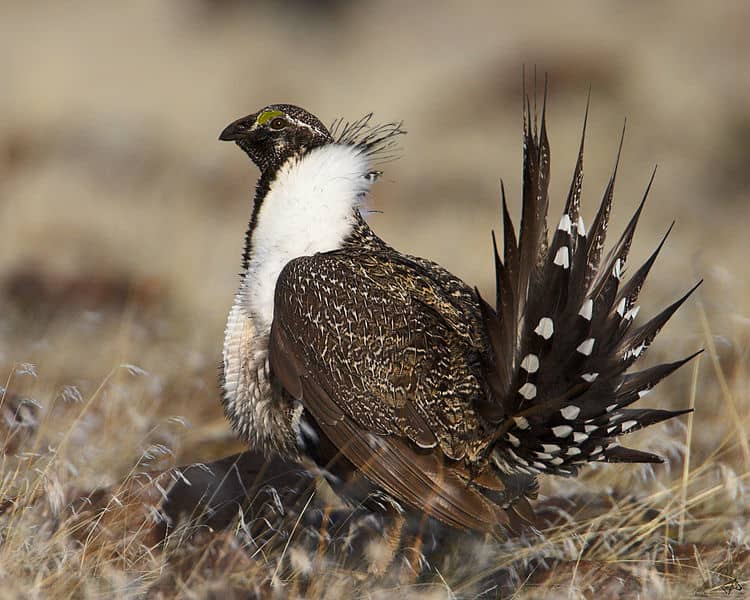Will Poisoning Ravens Save the Sage Grouse?
OutdoorHub Reporters 04.09.14

When it comes to competition between ravens and sage grouse, many biologists say that grouse are on the losing side of the fight. With dramatically shrinking habitat and declining numbers, conservationists say that efforts to save the sage grouse are vital in keeping the species from extinction. The debate now turns to whether those efforts will include culling one of the bird’s worst predators.
According to the Twin Falls Times-News, Idaho will be spending $100,000 over the next two years to poison ravens, which eat grouse eggs.
“Utah and Nevada have been doing this work for years,” said Idaho Fish and Game district supervisor Todd Sullivan. “They have shown there have been significant improvements in the areas where they have done the work on sage grouse recruitment.”
In 2010, the Nevada Wildlife Commission allocated $140,000 for raven control, but experts are unsure how significant raven predation upon grouse eggs is. Supporters of raven control say that the species experienced a large population boom since the 1980s. In contrast to the grouse’s shrinking sagebrush habitat, ravens are also more at home in the increasingly-developed West.
“Sage grouse are big birds, so they have large eggs, and that makes them tempting for an animal like a raven,” Utah State University biologist Mike Conover told the Reno Gazette-Journal.
Some conservationists criticize wildlife officials for not doing enough to manage raven populations, while animal rights groups criticize the agencies for launching these control studies. Alison Holloran, science director for Audubon Rockies, said that Idaho’s two-year program is expensive and ultimately in vain. Holloran explains that ravens are resilient creatures, and will bounce back quickly once the control study ends. Other critics add that the raven issue is only a distraction from more pressing habitat concerns.
Despite this, Idaho wildlife officials hope to kill thousands of ravens before the study ends. The program will actually involve a bit of trickery. Instead of leaving poisoned grouse eggs for the ravens to consume, the Fish and Game department will be placing chicken eggs instead. The poison will only be harmful to ravens and closely-related bird species such as crows or magpies. It is not expected to be dangerous to other wildlife or humans.
“We don’t know why raven populations have increased the way they have but we used to see them primarily in forested areas, now we’re seeing them in the desert areas where sagebrush is and that’s the primary habitat for sage-grouse,” Fish and Game spokesperson Mike Keckler told the Associated Press. “And we do know that ravens are a nest-predator on sage-grouse chicks and eggs and that is a factor. The question is how big of a factor is it in the overall decline of sage-grouse populations?”
The study is slated to begin later this spring.

